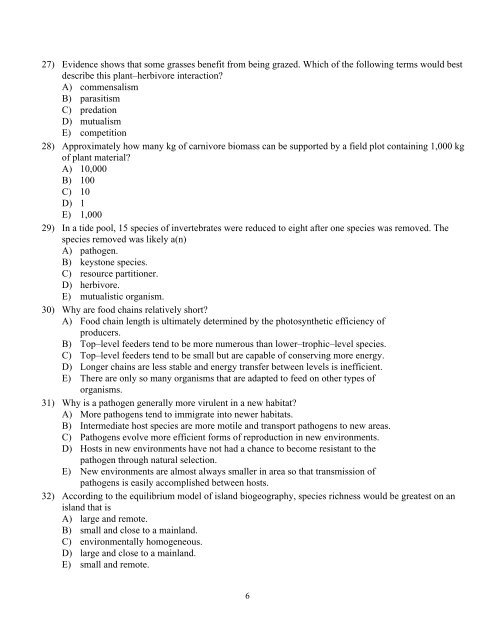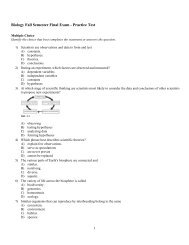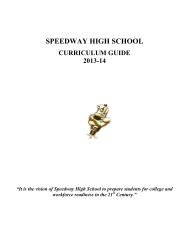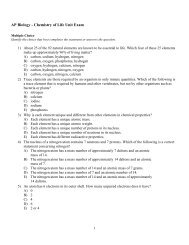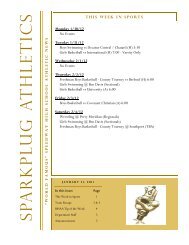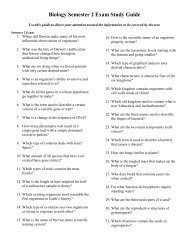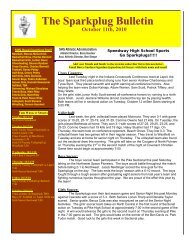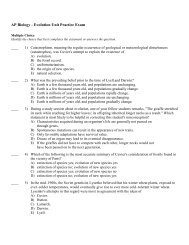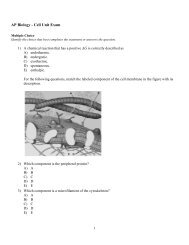ExamView - 2011-2012 AP Ecology Unit Exam.tst - AP Biology
ExamView - 2011-2012 AP Ecology Unit Exam.tst - AP Biology
ExamView - 2011-2012 AP Ecology Unit Exam.tst - AP Biology
Create successful ePaper yourself
Turn your PDF publications into a flip-book with our unique Google optimized e-Paper software.
27) Evidence shows that some grasses benefit from being grazed. Which of the following terms would best<br />
describe this plant–herbivore interaction?<br />
A) commensalism<br />
B) parasitism<br />
C) predation<br />
D) mutualism<br />
E) competition<br />
28) Approximately how many kg of carnivore biomass can be supported by a field plot containing 1,000 kg<br />
of plant material?<br />
A) 10,000<br />
B) 100<br />
C) 10<br />
D) 1<br />
E) 1,000<br />
29) In a tide pool, 15 species of invertebrates were reduced to eight after one species was removed. The<br />
species removed was likely a(n)<br />
A) pathogen.<br />
B) keystone species.<br />
C) resource partitioner.<br />
D) herbivore.<br />
E) mutualistic organism.<br />
30) Why are food chains relatively short?<br />
A) Food chain length is ultimately determined by the photosynthetic efficiency of<br />
producers.<br />
B) Top–level feeders tend to be more numerous than lower–trophic–level species.<br />
C) Top–level feeders tend to be small but are capable of conserving more energy.<br />
D) Longer chains are less stable and energy transfer between levels is inefficient.<br />
E) There are only so many organisms that are adapted to feed on other types of<br />
organisms.<br />
31) Why is a pathogen generally more virulent in a new habitat?<br />
A) More pathogens tend to immigrate into newer habitats.<br />
B) Intermediate host species are more motile and transport pathogens to new areas.<br />
C) Pathogens evolve more efficient forms of reproduction in new environments.<br />
D) Hosts in new environments have not had a chance to become resistant to the<br />
pathogen through natural selection.<br />
E) New environments are almost always smaller in area so that transmission of<br />
pathogens is easily accomplished between hosts.<br />
32) According to the equilibrium model of island biogeography, species richness would be greatest on an<br />
island that is<br />
A) large and remote.<br />
B) small and close to a mainland.<br />
C) environmentally homogeneous.<br />
D) large and close to a mainland.<br />
E) small and remote.<br />
6


